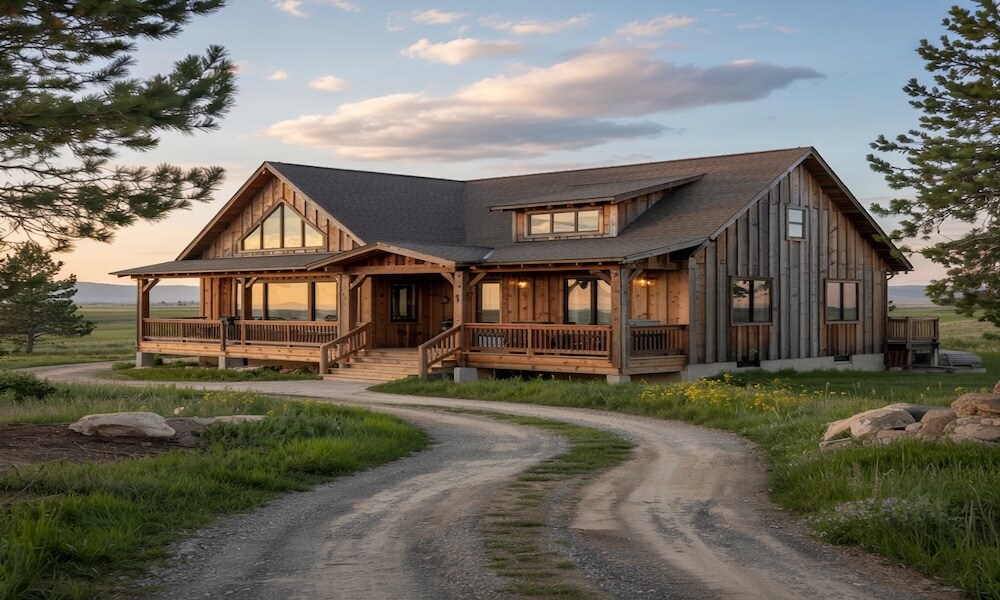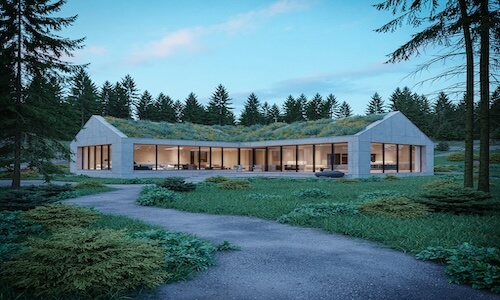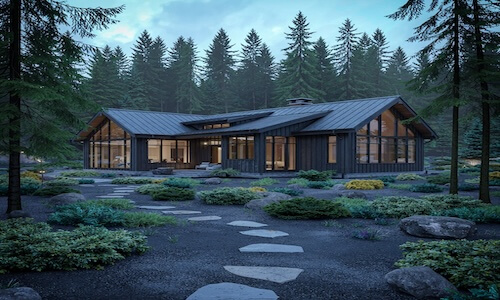Locations
Locations for Custom Homes in the United States
Building a custom home offers a unique opportunity to create a personalized living space tailored to one’s lifestyle and preferences. One of the most important decisions in the custom home-building process is selecting the ideal location. The United States offers a vast array of options for custom home locations, ranging from bustling metropolitan areas to peaceful rural settings. The choice of location can significantly impact the home’s design, cost, and long-term value. In this article, we will explore the factors to consider when choosing a location for a custom home, the most popular regions for building custom homes, and everything else you need to know about selecting the right place to build your dream home.

Key Considerations When Choosing a Location for a Custom Home

- Climate and Weather Conditions:
- The climate is a crucial factor when building a custom home, as it directly affects the materials, construction methods, and energy efficiency of the home. For instance, homes in areas prone to extreme weather conditions, such as hurricanes in Florida, tornadoes in the Midwest, or snowstorms in the Northeast, require specific architectural features like reinforced roofing, storm windows, or insulation systems.
- The climate can also influence the long-term comfort and cost of living in the area. For example, hot, dry climates may necessitate homes with energy-efficient cooling systems and drought-tolerant landscaping, while colder climates may require advanced heating systems and snow-resistant materials.
- Land Availability and Cost:
- Land availability plays a pivotal role in determining where you can build a custom home. In urban areas, finding large plots of land suitable for custom homes can be difficult due to high population density and limited space. In contrast, rural or suburban locations may offer larger, more affordable plots.
- The cost of land can vary widely depending on location. In highly desirable areas like major cities or waterfront properties, land prices can be prohibitively expensive, making it necessary to budget accordingly. In rural or less-populated areas, land may be more affordable, but the location might present challenges such as limited access to amenities or infrastructure.
- Proximity to Work, Schools, and Amenities:
- The location of a custom home should be convenient for the homeowner’s daily needs, such as commuting to work, access to schools, grocery stores, healthcare, and entertainment. For families, proximity to good schools and child-friendly amenities is often a priority.
- Urban areas and suburban neighborhoods typically offer more in terms of convenience, with easy access to schools, public transportation, shopping, and dining. On the other hand, rural locations might offer peace and privacy but require longer commutes to these amenities.
- Zoning and Local Regulations:
- Before purchasing land for a custom home, it’s important to understand the local zoning laws and building regulations. Zoning laws determine how land can be used, including restrictions on residential, commercial, or agricultural use. These regulations can impact how large your home can be, its design, and the type of features you can incorporate (such as a swimming pool or guest house).
- Building codes and permits vary by location, so it’s important to work with local authorities to ensure that your custom home adheres to all regulations. Additionally, certain areas may have environmental restrictions or historical preservation requirements that could affect your project.
- Taxes and Cost of Living:
- The tax rate and overall cost of living in a given area will influence long-term financial considerations. Property taxes vary from state to state, and some areas have higher tax rates than others. In addition to property taxes, states also differ in income taxes and sales taxes, which can affect the homeowner’s overall expenses.
- States like Florida and Texas are known for having no state income tax, which can be appealing for high earners. On the other hand, states like California and New York have higher taxes but offer advantages in terms of economic opportunities, culture, and amenities.
- Future Growth Potential:
- The future growth potential of a location is a critical consideration for anyone planning to build a custom home. Locations in areas with strong job growth, infrastructure development, and population expansion tend to experience higher property value appreciation over time. Conversely, building in areas with stagnating economies or declining populations could result in slower property value growth.
- When considering future growth, also take into account environmental factors, such as the risk of flooding, fires, or other natural disasters, that may impact the area’s long-term viability.
Popular Locations for Custom Homes in the United States

- West Coast:
- California: California is a top destination for custom homes, particularly in areas such as Southern California (Los Angeles, San Diego, Orange County) and Northern California (San Francisco Bay Area). The state offers diverse landscapes, from beachfront properties along the Pacific coast to mountainous retreats in the Sierra Nevada. California’s custom homes often feature luxurious designs, energy-efficient systems, and smart-home technology. However, the cost of land and home construction in these regions can be extremely high, and areas like California’s wildfire-prone zones require specialized building techniques.
- Washington and Oregon: Both of these states offer beautiful, temperate climates and scenic landscapes, making them ideal for custom homes. From the wine country of Oregon’s Willamette Valley to the lush forests of Washington’s Olympic Peninsula, these regions offer a peaceful, nature-filled environment. Cities like Seattle and Portland offer a combination of urban amenities with close proximity to nature.
- Southwest:
- Arizona: Arizona, especially around cities like Phoenix, Scottsdale, and Tucson, is a popular area for custom homes due to its warm climate, affordable land, and stunning desert landscapes. Many custom homes in Arizona incorporate desert-themed architecture, such as adobe-style homes with energy-efficient designs to withstand the heat. The state’s lower cost of living and favorable tax rates also make it an attractive option for custom home builders.
- Nevada: Nevada, particularly around Las Vegas, has become an increasingly popular location for luxury custom homes. The state offers lower property taxes and a lack of state income tax, which are appealing for wealthy buyers. Nevada’s desert landscapes provide unique opportunities for homeowners to design custom homes that integrate seamlessly with the natural environment.
- Mountain West:
- Colorado: The state of Colorado is known for its picturesque mountain landscapes and high quality of life. Custom homes in Colorado often feature rustic and contemporary designs that blend with the natural surroundings. Cities like Denver and Boulder are desirable for those who want to live close to both urban amenities and outdoor recreational opportunities like hiking, skiing, and mountain biking.
- Utah: Utah has a rapidly growing real estate market, with areas like Salt Lake City and Park City offering desirable locations for custom homes. The state’s stunning national parks, such as Zion and Bryce Canyon, and world-class skiing resorts make it a popular choice for people seeking a balanced lifestyle with access to nature and adventure.
- South and Southeast:
- Texas: Texas offers a diverse range of locations for custom homes, from the booming cities of Austin, Dallas, and Houston to more rural and tranquil locations in the Hill Country or along the Gulf Coast. Texas is known for its no-state-income-tax policy and relatively affordable land prices compared to other states. Many custom homes in Texas feature large plots of land and sprawling ranch-style homes, perfect for those seeking privacy and space.
- Florida: Florida, with its warm climate and beachfront properties, is another attractive destination for custom homes. Cities like Miami, Sarasota, and Tampa offer custom homebuilders the chance to design homes that take full advantage of coastal views and year-round sunshine. Homes in Florida often include features such as pools, outdoor kitchens, and expansive terraces to enjoy the tropical climate.
- Northeast:
- New York and New Jersey: Custom homes in the Northeast often focus on blending classic architecture with modern luxury. Areas like Long Island, the Hudson Valley, and parts of New Jersey offer scenic locations, from waterfront properties along the Atlantic to estates nestled in lush forests. Building codes and regulations in these states can be more stringent due to historical preservation and environmental concerns, but the opportunities for custom designs remain abundant.
- Midwest:
- Illinois and Michigan: The Midwest offers a more affordable option for those looking to build custom homes. Cities like Chicago, along with suburban areas in Illinois and Michigan, provide a mix of urban convenience and suburban tranquility. Custom homes in these areas are often built on larger plots of land, offering more space for families and an emphasis on traditional architectural styles.
